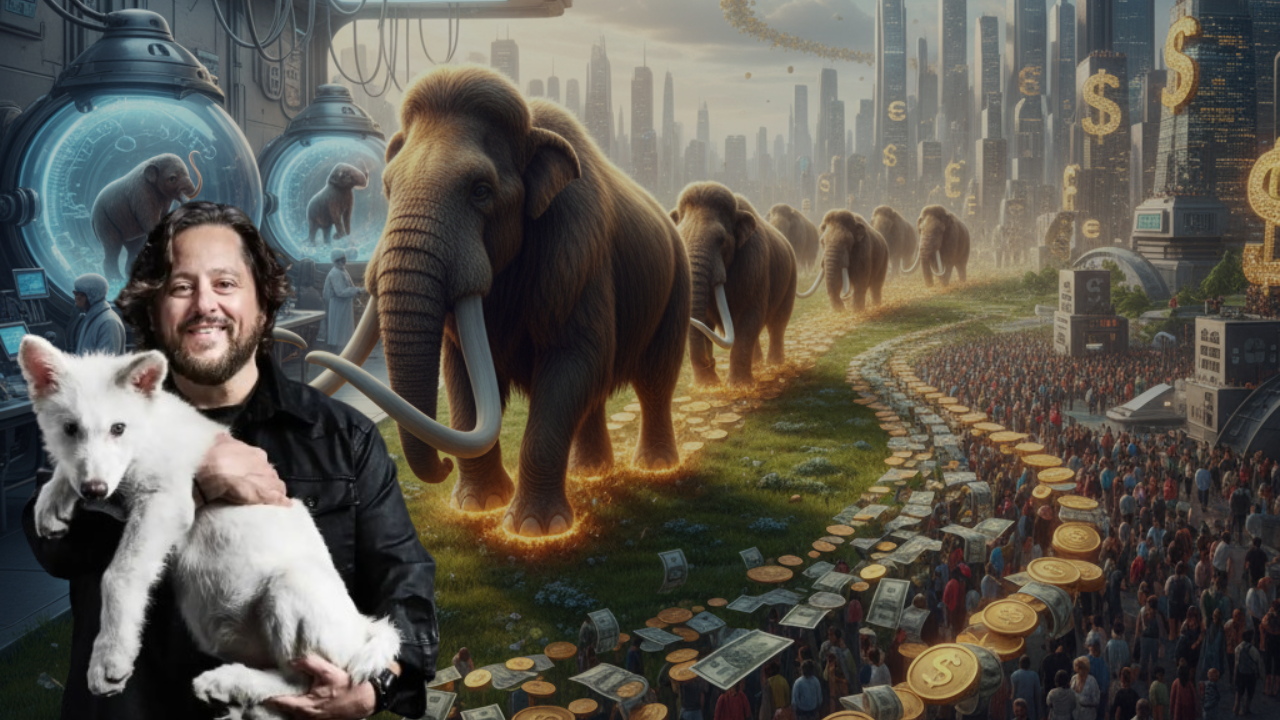Science
Ben Lamm Becomes World’s First De-Extinction Billionaire

Ben Lamm, a 43-year-old entrepreneur from Texas, has made headlines as the world’s first “de-extinction billionaire,” driven by his ambitious goal to revive the woolly mammoth. This extinct, cold-adapted giant vanished approximately 4,000 years ago, but Lamm sees it as more than just a nostalgic endeavor. Through his company, Colossal Biosciences, Lamm is exploring a groundbreaking commercial opportunity that could reshape conservation and biotechnology.
Founded in 2021 alongside renowned Harvard geneticist George Church, Colossal Biosciences describes itself as the world’s first “de-extinction company.” The firm’s mission is to resurrect extinct species such as the woolly mammoth, dodo, and Tasmanian tiger by leveraging ancient DNA, CRISPR gene editing, and advanced reproductive technologies. Their laboratories in Dallas currently house woolly mice, engineered with mammoth-like traits such as dense fur and a metabolism suited for cold climates. This project aims to produce a mammoth-elephant hybrid calf by 2028.
Funding Fuels Ambitions
In January, Colossal raised $200 million, bringing its valuation to $10.2 billion. This funding round increased total investment to $435 million, with contributions from notable backers like Breyer Capital and Draper Associates. Despite generating no revenue yet, this successful funding has positioned Lamm’s net worth at an estimated $3.7 billion. Colossal has also created two spin-off companies: Form Bio, a computational biology platform, and Breaking, focused on biological recycling.
While the revival of megafauna garners significant attention, Lamm emphasizes that the primary goal of Colossal lies in preventing modern extinction. With over 46,000 species critically endangered, the urgency for innovative solutions is apparent. Beth Shapiro, chief science officer at Colossal, states, “The planet is transforming at a speed evolution cannot match.” This realization has led to new interest from governments seeking biodiversity contracts that could fund genetic interventions aimed at preserving endangered species.
One unnamed island nation is considering a partnership with Colossal to save a keystone animal facing reproductive challenges. Traditional methods would require 25 years and an estimated $350 million, while Colossal proposes a more radical approach: genetically engineering females to breed continuously instead of seasonally. “If we charged them $100 million, we’d still save them 20 years and hundreds of millions of dollars,” Lamm explains, highlighting the potential for significant cost savings and conservation impact.
Radical Conservation and Ethical Concerns
The shift toward funding “radical conservation” has sparked debate. Critics, including Karl Flessa, a geoscientist from the University of Arizona, argue that releasing genetically modified organisms could pose unforeseen risks. Flessa labels the mammoth project as “ill-advised” and suggests it is merely a tactic to attract investment. Environmental ethicists caution that introducing cold-adapted animals in a warming climate could lead to disastrous consequences.
Yet, Shapiro counters these concerns by emphasizing the need for innovative solutions to address pressing ecological issues. “Enormous problems sometimes require radical solutions. This is new money, new ideas in a space that desperately needs it,” she asserts.
For Lamm, the woolly mammoth represents more than a scientific challenge; it serves as a flagship project that could pave the way for broader ecological restoration efforts. The journey began with mammoth remains found in Arctic permafrost, allowing researchers to sequence ancient DNA and compare it to that of Asian elephants, which are their closest living relatives. By integrating traits associated with cold adaptation into embryos, they aim to bring the woolly mammoth back to life.
A Billion-Dollar Future
The approach to de-extinction is fraught with controversy, and the timeline is ambitious. Despite the substantial risks involved, the economic incentives for radical bio-innovation are becoming increasingly compelling. Governments and investors are beginning to view de-extinction not merely as a fanciful idea but as a viable strategy for climate and conservation challenges.
As ecosystems face unprecedented changes, the potential economic benefits from interventions like Colossal’s could reshape the landscape of conservation. The firm is positioning itself at the forefront of a new industry, betting that the future of the planet might hinge on the ability to rewrite its biological past. Ben Lamm’s journey from video-game entrepreneur to a leading figure in biotechnology illustrates the transformative possibilities that lie ahead in the realm of de-extinction and conservation.
-

 World5 months ago
World5 months agoSBI Announces QIP Floor Price at ₹811.05 Per Share
-

 Lifestyle5 months ago
Lifestyle5 months agoCept Unveils ₹3.1 Crore Urban Mobility Plan for Sustainable Growth
-

 Science4 months ago
Science4 months agoNew Blood Group Discovered in South Indian Woman at Rotary Centre
-

 World5 months ago
World5 months agoTorrential Rains Cause Flash Flooding in New York and New Jersey
-

 Top Stories5 months ago
Top Stories5 months agoKonkani Cultural Organisation to Host Pearl Jubilee in Abu Dhabi
-

 Sports4 months ago
Sports4 months agoBroad Advocates for Bowling Change Ahead of Final Test Against India
-

 Science5 months ago
Science5 months agoNothing Headphone 1 Review: A Bold Contender in Audio Design
-

 Top Stories5 months ago
Top Stories5 months agoAir India Crash Investigation Highlights Boeing Fuel Switch Concerns
-

 Business5 months ago
Business5 months agoIndian Stock Market Rebounds: Sensex and Nifty Rise After Four-Day Decline
-

 Sports4 months ago
Sports4 months agoCristian Totti Retires at 19: Pressure of Fame Takes Toll
-

 Politics5 months ago
Politics5 months agoAbandoned Doberman Finds New Home After Journey to Prague
-

 Top Stories5 months ago
Top Stories5 months agoPatna Bank Manager Abhishek Varun Found Dead in Well









